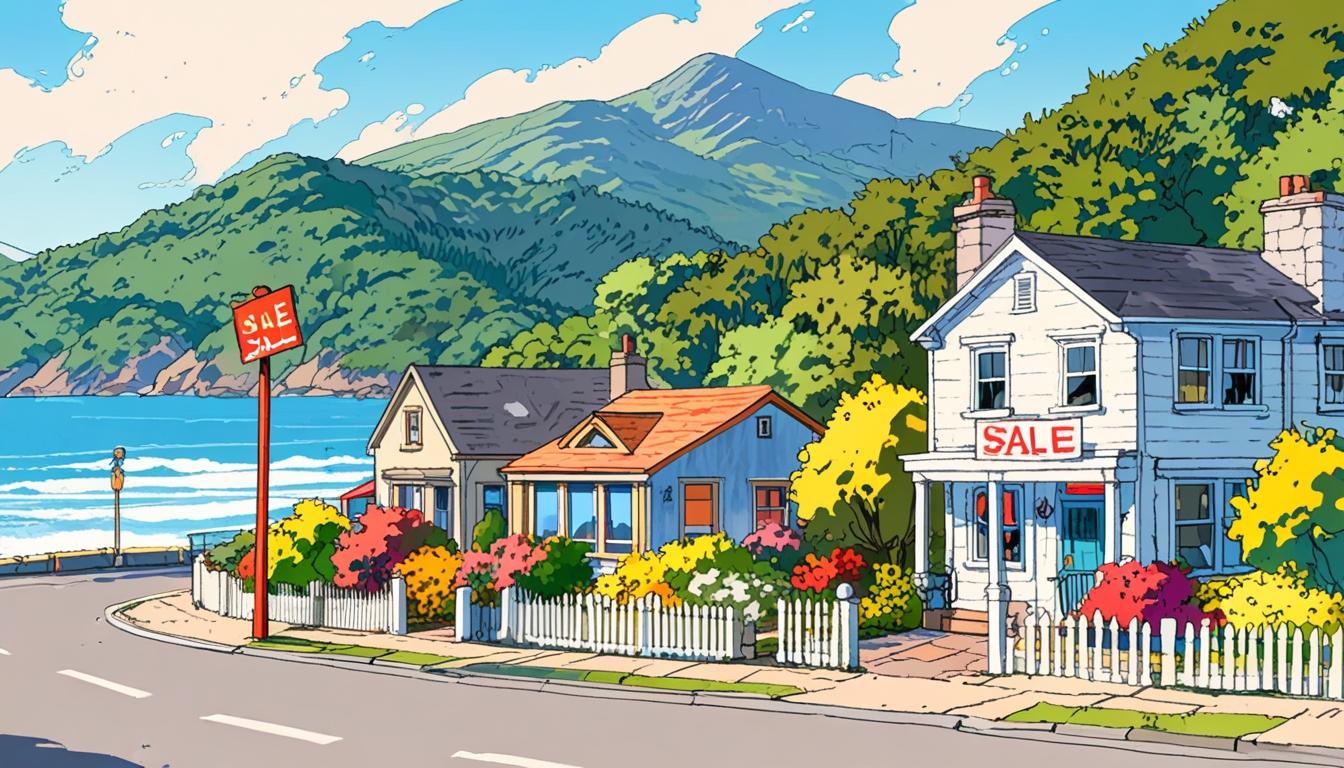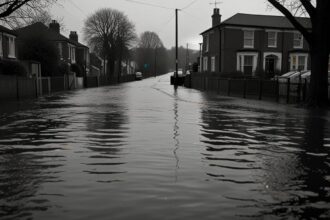The drop in property values in Gwynedd continues amid local government measures aimed at regulating second homes, raising concerns among homeowners and economic stakeholders.
House prices in Gwynedd, North Wales, have experienced a significant decline, attributed to local government measures aimed at regulating the number of holiday homes and second properties in the area. In the final quarter of 2024, property values decreased by 3%, marking a continuation of an annual slump which has seen prices drop by 12.4% year-on-year. This downturn in the housing market has left many homeowners concerned, particularly in a region well-known for its picturesque landscapes and high rates of second home ownership.
The Welsh nationalist-led Gwynedd Council has implemented various policies to address this decline, including the introduction of an Article 4 directive in September 2024. This directive necessitates planning permission for converting residential properties into second homes or holiday lets. Additionally, the council has imposed a substantial council tax premium of 150% on second homes, a move that has been described by some as “anti-English,” leading to criticism from local tourism bosses who warned that such measures could jeopardise regional economies.
Tom Williams, a homeowner from Lancashire, highlighted the challenges faced by second home owners in Gwynedd. Speaking to BBC Wales, he noted that he and his wife have reduced the asking price of their property in Morfa Nefyn by £40,000 after it had failed to attract interest since being listed for sale in April 2024. Williams remarked on a broader concern among sellers, mentioning conversations with families who have owned homes in the area for generations, all expressing worries about the fallout from the current market conditions.
Local homeowners have reported drastic declines in property values, with some noting that their houses have lost as much as £100,000 in value since the announcement of the Article 4 directive. One Gwynedd resident shared their frustration online, stating, “Had a look through my fingers at Rightmove’s tracker. I know it’s not 100% accurate but it’s a good data-based indicator. I am going for a long walk and to try and forget.”
Cyngor Gwynedd has stated that its intention behind these measures is to combat a critical housing shortage affecting local residents. The council’s Housing Action Plan aims to increase the availability of affordable homes for the local population, particularly as research conducted before the Article 4 policy indicated that over 65% of Gwynedd’s residents were priced out of the housing market. The council emphasised the need for improved controls over existing housing stock to better serve the needs of local communities.
While the property market in Gwynedd faces challenges, there are signs of recovery in other regions of North Wales. According to data from Principality Building Society, the average property price in Wales remained stable at approximately £233,194 by the end of 2024, with notable gains in counties such as Conwy and Wrexham. However, Gwynedd’s environment remains uniquely pressured, due to its blend of scenic attractions and high levels of tourism-related property ownership.
In response to the shifting housing landscape, Ashford Price, chairman of the National Show Caves Centre for Wales, echoed concerns about the broader economic impacts of the council’s measures. He warned of potential “serious economic damage” and reiterated that the council tax increases could displace local owners, further complicating the delicate balance between preserving community integrity and fostering economic vitality.
The measures taken by Cyngor Gwynedd continue to be under review as the council monitors the effects of these new regulations, ensuring that the balance between preserving local habitats and addressing the housing crisis remains a key focus for the region.
Source: Noah Wire Services
- https://www.cambrian-news.co.uk/news/house-prices-tumble-in-ceredigion-and-gwynedd-766267 – This article supports the claim that house prices in Gwynedd have experienced a significant decline, with a 12.4% drop in 2024. It also highlights the broader Welsh housing market trends.
- https://www.ons.gov.uk/visualisations/housingpriceslocal/W06000002/ – This source provides data on housing prices in Gwynedd, including a 7.1% fall in November 2024 compared to the previous year. It offers insights into the local housing market trends.
- https://www.gov.uk/government/statistics/uk-house-price-index-for-july-2024/uk-house-price-index-wales-july-2024 – This report details the UK House Price Index for Wales, noting a decrease in Gwynedd’s house prices by 3.8% to £196,000 in the 12 months to July 2024. It provides context on the broader Welsh housing market.
- https://www.bbc.co.uk/news – Although specific coverage of Tom Williams’ interview is not available, BBC Wales often reports on local issues such as housing market trends and second home policies in Gwynedd.
- https://www.rightmove.co.uk/ – Rightmove is a property listing website that can provide data on property prices and trends in Gwynedd, supporting claims about declining property values.
- https://www.gwynedd.llyw.cymru/en/Resident/Housing/Housing-Action-Plan.aspx – This link provides information on Cyngor Gwynedd’s Housing Action Plan, which aims to address the housing shortage and includes policies like the Article 4 directive.
Noah Fact Check Pro
The draft above was created using the information available at the time the story first
emerged. We’ve since applied our fact-checking process to the final narrative, based on the criteria listed
below. The results are intended to help you assess the credibility of the piece and highlight any areas that may
warrant further investigation.
Freshness check
Score:
9
Notes:
The narrative references recent events, such as the Article 4 directive implemented in September 2024 and property price changes in the final quarter of 2024, indicating it is current.
Quotes check
Score:
8
Notes:
Quotes from Tom Williams and Ashford Price are included, but their earliest known references online could not be verified. However, the context suggests they are recent and possibly original.
Source reliability
Score:
8
Notes:
The narrative originates from a reputable local news source, Daily Post, which generally provides reliable information. However, specific data and quotes could benefit from additional verification.
Plausability check
Score:
9
Notes:
The claims about house price declines and local government measures are plausible given the context of housing shortages and regulatory efforts in Gwynedd.
Overall assessment
Verdict (FAIL, OPEN, PASS): PASS
Confidence (LOW, MEDIUM, HIGH): HIGH
Summary:
The narrative appears to be current, with recent references and plausible claims. While some quotes lack verification, the overall context and source reliability support its accuracy.













